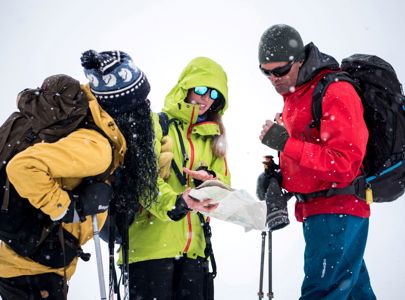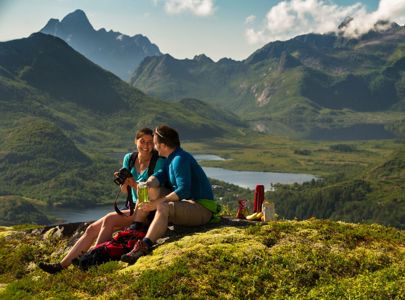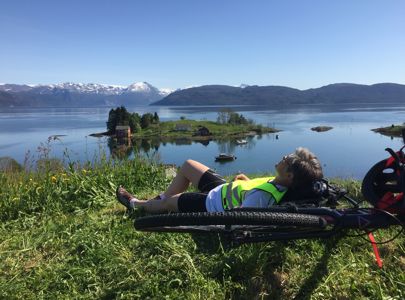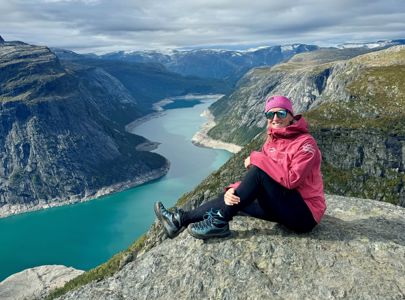Useful information
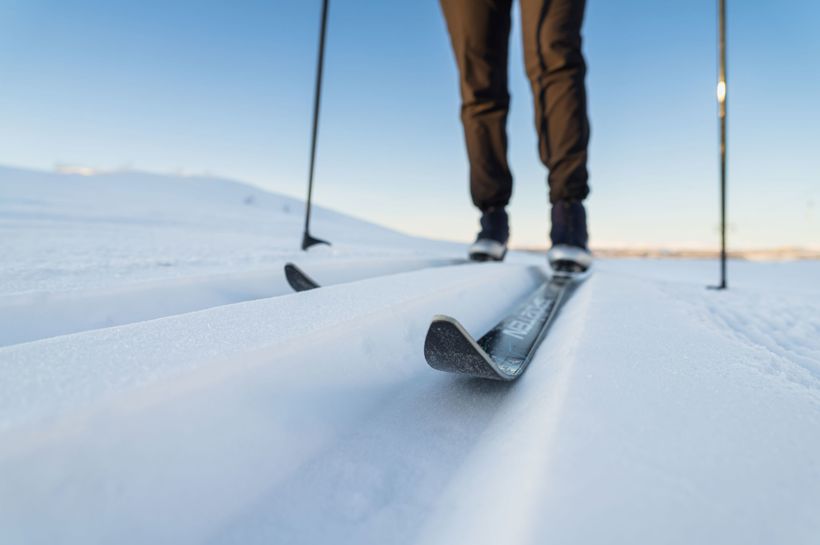
A self-guided tour is an adventure on your own terms—giving you the freedom to explore at your own pace while we take care of the logistics. These tours include luggage transfers, comfortable accommodations, and meals, so you can focus on enjoying the journey.
With a self-guided tour, you decide when to start your day, how fast to go, and when to take a break, a shortcut, or a detour. After a rewarding day outdoors, you’ll arrive at your designated accommodation, where a delicious meal and a good night’s sleep await—preparing you for the next stage of your adventure.
Before your trip begins, you’ll receive an email with everything you need: electronic maps, a detailed tour description, and a suggested equipment list.
Since this is a self-guided experience, you won’t encounter any staff from our company during the tour, and we do not have a local base or support vehicle. This means you’ll need to be prepared to handle minor issues such as a flat tire, whether you’re on your own bike or a rented one. However, if you ever need assistance, you can always reach us by phone at +47 917 25 200.
Although our tours run on set dates and others may book the same tour, you might not see fellow participants during the day. However, you’ll meet at the accommodations in the evening, and sometimes, travelers choose to cycle, hike or ski together for part of the journey.
A self-guided tour is all about flexibility, adventure, and the thrill of independent exploration—without the hassle of planning every detail.

Most our self-guided tours include luggage transfer.
See the website for information on each tour package. Here you will find an overview of what else is included in the price.
Prices are based on double rooms or apartments (min. 2 persons).
Usually, you get:
- Accommodations
- Most meals
- Luggage tranfer
- Some transport (train/boat/bus)
- Maps (digital or topographic)
- Tour description (pdf)
Not included:
- Some tours include transport you must pay on the spot
- Travel and cancellation insurance
- Beverages and snacks
- Optional activities
- Any transport not listed in the itinerary
Rental Equipment
Bike rental
Rental bikes are available for most tours but are not included in the basic price. They can be booked as an add-on when reserving your trip. We offer touring bikes and e-bikes for most routes, providing a comfortable and efficient ride.
Since this is rental equipment used by different cyclists every week, we do our best to provide a bike that fits you well. However, it may not feel exactly like your own personal bike. All bikes come with flat pedals.
Before setting off on your trip, it is essential to carefully check your bike at the rental location. Test the brakes, gear shifts, and overall condition to ensure everything is working properly. Once you leave, it will be difficult—if not impossible—to replace the bike.
During the trip, you are fully responsible for the bike, including any minor repairs such as fixing a flat tire. Please note that there is no support vehicle on the cycling tours, so you should be comfortable handling small mechanical issues on your own.
If you rent an e-bike, you will receive a charger to recharge the battery at your accommodation each night. However, no extra battery is provided, so it’s important to plan your battery usage accordingly throughout the day.
Ski rental
For our ski tours, only cross-country classic skis or Nordic skis are available for rent—skate skis are not an option. All rental skis come with NNN classic bindings, so if you are bringing your own boots, ensure they are compatible.
If you already have skis that you are comfortable with, we highly recommend bringing your own. Snow conditions can vary significantly, and different skis perform better in different weather—whether it’s icy, wet, dry, or freshly snowy. Having skis you’re familiar with can make a big difference in your comfort and performance on the trails.
You must bring your own grip wax, as rental skis do not come pre-waxed. A glider wax may also be helpful to improve speed and efficiency. Be sure to inspect your skis and bindings at the rental location before starting your tour. Once you leave, it is difficult—if not impossible—to swap them.
Blisters can quickly ruin a great ski trip, so take steps to prevent them, by wearig well-fitted boots. use prper ski socks. pre-tape potential hot spots, and bring extra socks to swap out if your feet get damp.
Accommodations
Norway does not have an official star rating system for accommodations, so standards may vary. However, we carefully select comfortable and well-appointed places to stay, ensuring they complement the nature of your journey. Our accommodations typically include hotels, mountain lodges, and cabins, with the specific choice influenced by location, daily stage distances, and available meal options.
While most accommodations offer private rooms with en-suite bathrooms, in some rural areas, options may be more limited due to the remote nature of the route. On rare occasions, you may stay in places where bathrooms and toilets are shared.
During the Troll Trail ski tour, you’ll spend one night in a DNT self-service mountain cabin. This is a rustic yet cozy experience in a multi-bed room setting. It's important to note that this cabin does not have indoor toilet or shower facilities—water must be fetched from an external source. The cabin is equipped with a solar-powered system that provides lighting and USB charging. A few other tours also include DNT cabins where bathrooms are shared and single rooms are not possible. Information about this is found under each tour.
In Lofoten, due to high demand and limited accommodation options, guests will stay in traditional fishermen’s cabins (Rorbuer). Each cabin is shared among our guests, featuring two bedrooms and one bathroom. These cabins offer a cozy and authentic experience while ensuring a comfortable stay in this stunning coastal region.
In some remote locations, accommodation choices may be limited, as they are determined by the practical distances of each daily stage and the availability of meal services along the route. While standards may vary, each overnight stay is chosen to provide a welcoming and comfortable resting place after an active day outdoors.
Whether staying in a hotel, a cozy lodge, a traditional fishermen’s cabin, or a mountain refuge, accommodation on our tours is an essential part of the experience—allowing you to fully immerse yourself in Norway’s natural beauty.
Meals
On our tours, meals are an essential part of the experience, providing nourishment for your adventure while also offering a taste of Norwegian hospitality and cuisine.
Your tour price usually includes breakfast, a self-packed lunch, and for winter tours, the opportunity to fill your thermos with tea or coffee before setting off for the day. Breakfasts are typically hearty, offering a variety of options to help you fuel up for the journey ahead. For lunch, you will pack your own meal from the breakfast buffet, ensuring you have something to enjoy along the route.
In areas where dining options are limited or unavailable, dinner is also included in your tour package. Depending on the location, you will be served a set 2- or 3-course meal or a traditional Norwegian buffet. Please note that the dinner menu is fixed and determined by the restaurant or accommodation, reflecting local ingredients and regional flavors.
For your convenience, most accommodations and restaurants will have reserved tables for our guests, creating a welcoming and communal atmosphere. You may find yourself sharing meals with fellow travelers who have booked the same journey, offering a great opportunity to exchange stories and experiences.
Self-packed lunch
Each morning, the breakfast buffet transforms into your personal lunch station, allowing you to craft a meal that suits your taste and energy needs for the day ahead.
The process may vary slightly depending on the hotel or guesthouse. Some places may provide designated packing areas with wrapping materials, while others may require you to ask the staff for paper or plastic to wrap your food. For a reusable option we recommend bringing your own lunch box.
This Norwegian-style packed lunch is a simple yet essential part of the journey, giving you the flexibility to stop and enjoy a meal whenever and wherever you choose—whether it’s by a peaceful fjord, on a scenic mountain trail, or at a charming roadside rest stop. We suggest bringing a sitting pad for your lunch break.
Please note that snack bars, chocolate, nuts, and other personal snacks are not included in your lunch pack and must be brought with you.
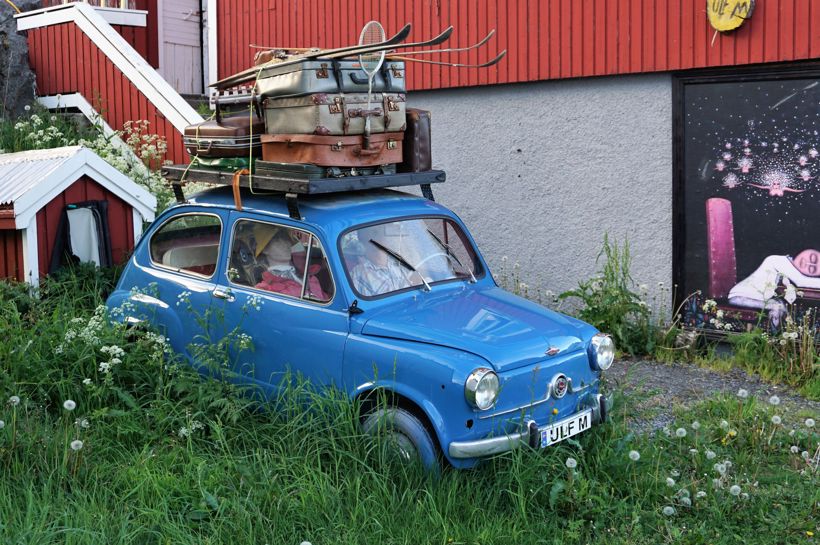
For specific transfer details, please refer to the information provided on each tour's dedicated webpage.
Many of our ski tours typically include transportation to and from Oslo Airport. Please not the set times for this, and book your flights accordingly.
When exploring the fjords and coastal regions of Norway, you'll encounter various modes of boat transport. To clarify, ferries are large vessels that can carry cars, while express boats and smaller boats are designed for passengers (and bikes). Pedestrians/cyclists can enjoy free car ferry rides, meaning no ticket is needed.
Given that some terminals serve both boats and ferries, it’s important to ensure you board the correct vessel. If you’re unsure, don’t hesitate to ask the staff for assistance.
To ensure a smooth journey, we strongly recommend checking bus, boat, and ferry schedules directly on-site, as changes or cancellations can occur, and there are seasonal variations. For up-to-date departure information and fares (though not all companies), visit entur.no on Google or download the Entur app from the App Store or Google Play. This will provide you with the most accurate and current details available.
Luggage transfer
Enjoy the convenience of hassle-free luggage transfer throughout your journey. Your primary luggage (one item per person) will be transported directly from one hotel to the next, so you can travel light and focus on enjoying your adventure. All you’ll need to carry with you is a small pannier or backpack containing essentials like lunch, extra clothes, valuables, and anything necessary for the day’s activities.
If you’re riding an E-bike, don’t forget to pack your charger in your day pack.
While the luggage transfer service is generally comprehensive, there may be a few exceptions during certain stages or when traveling to and from the DNT self-service cabin on the Troll Trail.
Unless otherwise noted in your daily itinerary, please ensure your luggage is placed in the designated area at the hotel by 09:30. If you miss this deadline or the time specified in the day’s program, the transfer cannot be guaranteed, and additional charges may apply. Generally, expect your luggage to arrive at your next accommodation around 15:00.
To ensure smooth handling, label your luggage with a tag containing your name and phone number. You’ll find a luggage tag included in the information envelope provided by Discover Norway at your first accommodation. Please also adhere to the size and weight limits—keep your luggage to a maximum of 20 kg and limit it to one item per person. This helps keep the transfer process efficient and stress-free.
Luggage transfer is conducted at your own risk, so make sure you have adequate insurance for any potential damage or loss. Valuable items such as money, jewelry, cameras, computers, passports, and credit cards should always be kept with you during the trip, provided the weight limit allows it.
For extra protection, we recommend packing your belongings in a waterproof suitcase or bag as your luggage may be exposed to rain during the transfer process.
You are responsible for bringing your luggage to and from your room. On some bicycle tours, you will need to carry your luggage on and off ferries/boats. This is due to the geographical and logistical challenges in certain areas, where a car may have to take long detours around fjords to stay with the biking route.
Luggage is typically transferred by the accommodations or local transport services, including taxis and transport companies. On some routes, different carriers may handle the luggage at each end of the ferry journey.
With these details in mind, you can relax and enjoy the journey, knowing your luggage will be waiting for you at your next destination!
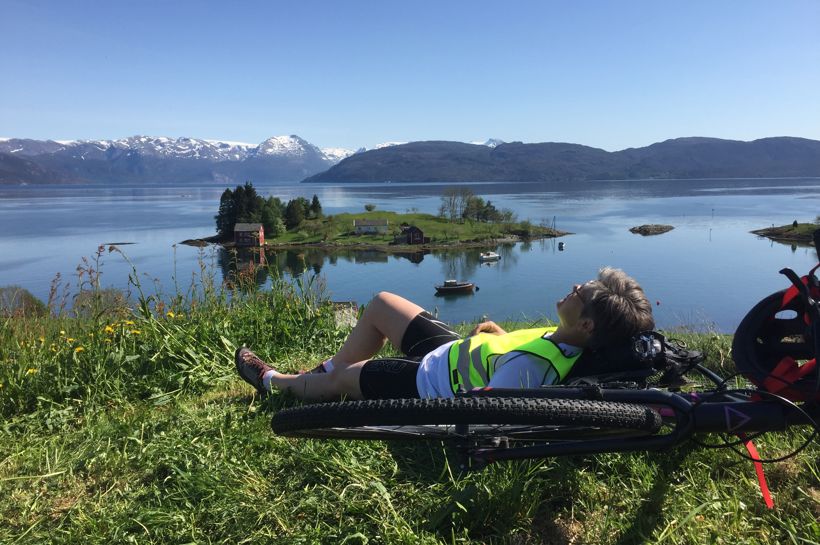
As you embark on our tours, it's important to keep in mind that you are undertaking the journey at your own risk, with safety being our top priority. For your well-being, we strongly recommend that at least two individuals cycle or walk together for added safety.
Our tours cater to a range of preferences and skill levels, offering varying difficulty levels to suit different experiences. Some tours involve long day trips, while others are designed with families and beginners in mind, ensuring there's something for everyone.
Be prepared for unpredictable weather conditions—heavy rain, snow, or wind can make the adventure more challenging and add a unique dimension to your journey. Prior experience with extended tours can greatly enhance your enjoyment, as it helps you better manage the physical and mental demands of the trip.
Each trip is categorized by its difficulty level, with recommendations based on an average physical condition. However, it’s important to remember that you know yourself best—you must be able to cycle, hike or ski for multiple days in a row, regardless of the weather conditions. Keep in mind, in some remote stages of the tours, taking a taxi or bus is not an option. These are rural areas with very few bus services, if any, and taxis are scarce, often requiring pre-booking the day before.
With these points in mind, you'll be well-prepared to take on the challenges and rewards of your journey.
Biking
EASY: Families and people of most ages who are in generally good condition, and have some basic cycling experience. Daily stages approx. 15-30 km
MODERATE: People who are in generally good condition, and have previous cycling experience. Must be prepared for all kinds of weather. Daily stages approx. 20 - 50 km.
DEMANDING: People who are in very good condition, and have previous experience in cycling long distances and many days in a row. Daily stages approx. 30 - 70 km.
Hiking
EASY: The trips are suitable for families and people of all ages. 5-12 km/5-6 hours including breaks.
MODERATE: The tours are suitable for you with normal good fitness. 12 - 20 km/6-7 hours including breaks.
DEMANDING: Requires a high level of fitness. Summits and lots of ups and downs. 6-10 hours including breaks.
Skiing
EASY: The Explore Rondane tour is a nice family tour with short day trips and well-groomed trails. A base stay is another option for easier daytrips of your own choice, for instance One Valley - Two Destinations.
MODERATE: The Peer Gynt trail and the Jotunheimen XC trail are nice tours for people with an average level of fitness. Relatively shorter stages and well-prepared tracks. Some cross-country skiing experience required.
DEMANDING: The Troll Trail is a demanding and challenging tour that requires careful preparation and physical fitness. It is essential to be in good shape, familiar with winter conditions in the mountains, and well-equipped for the elements. The variable snow conditions and the unpredictable weather in this rugged terrain add an extra layer of complexity to the journey. One of the primary challenges of the Troll Trail is that the trails are not regularly groomed, meaning that conditions can change dramatically from day to day. This requires you to navigate with maps and compasses, making knowledge of basic navigation skills essential. You will be covering long stretches of rugged terrain, often with limited facilities or infrastructure. This means that you must be mentally and physically prepared for the rigors of the trail, including the possibility of adverse weather and the demands of self-sufficiency in remote areas. Overall, the Troll Trail offers an extraordinary experience for those who are up for the challenge, but it’s important to be prepared for the physical and mental demands of the journey.
Do you miss anything regarding useful information from Discover Norway?
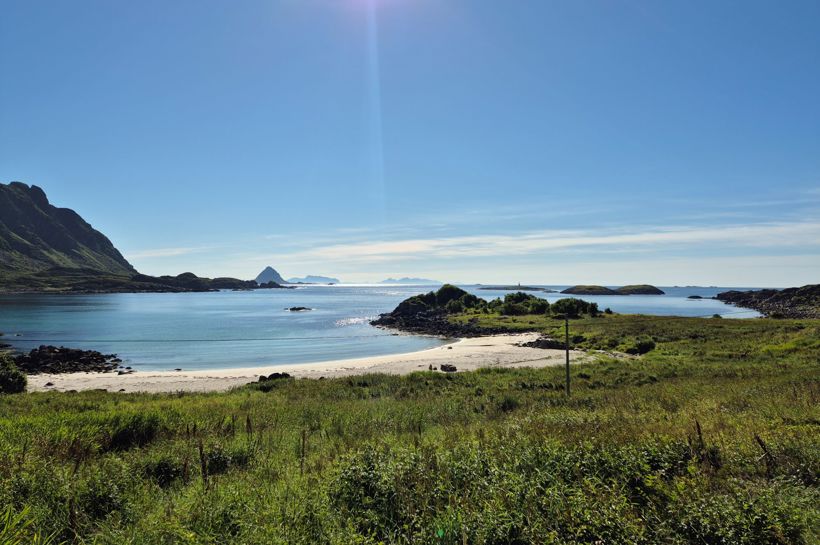
Before setting off on your journey, you'll receive a detailed packing list to ensure you're well-prepared for a variety of weather conditions. Norway’s climate is famously unpredictable, so it’s essential to be ready for sudden changes—whether it’s sunshine, wind, rain, or snow.
No matter the season, temperatures can drop unexpectedly, especially in the mountains or along the coast. Rain, wind, and chilly evenings are always a possibility, so layering is key to staying comfortable. Winter, in particular, can bring biting cold, which feels even more intense when combined with strong winds.
Weather conditions also vary significantly between northern and southern Norway. The north experiences colder temperatures and longer, harsher winters, while the south tends to have milder conditions, especially along the coast. However, even in the summer, the weather can be unpredictable.
During summer (June–August), Norway experiences long daylight hours, with the famous Midnight Sun in the north, where the sun never sets for weeks. While daytime temperatures can be pleasantly warm, ranging from 15–25°C in the south and 10–20°C in the north, sudden shifts in weather are common. Even in summer, you may encounter rain showers, strong winds, or cooler temperatures, particularly in the mountains. The evenings can be surprisingly chilly, so warm layers are still necessary.
In short, whether you’re traveling in summer or winter, always be prepared for a mix of conditions.







